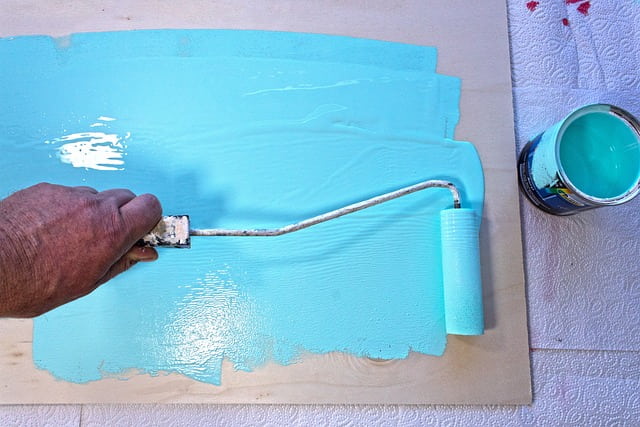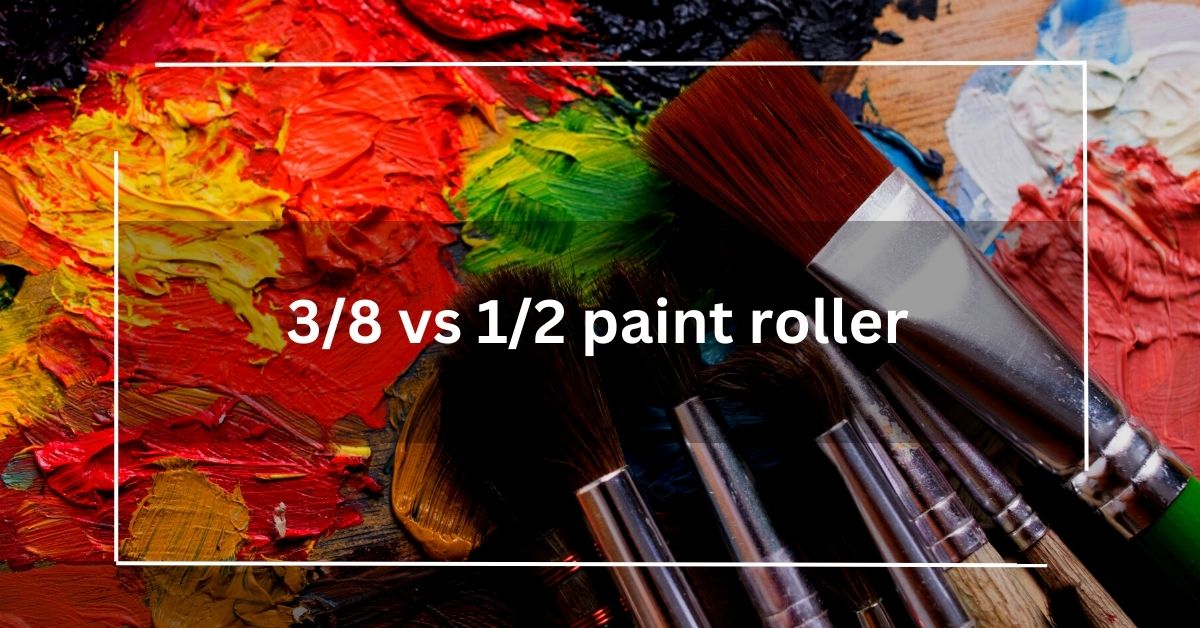Enamel and latex paint are both widely used in home improvement projects, but it’s important to understand their differences before attempting to paint over one with the other.
One of the most common questions is whether you can paint enamel over latex. The answer is yes – it is possible to paint enamel over latex. However, you must take a few steps to ensure the job is done properly.
You can paint over latex paint with enamel, but prepare the surface by applying a primer. The color will be more opaque if you normally paint over latex.
What Happens If You Put Oil-Based Paint Over Latex?
Latex paint and oil-based paint do not mix well. If you put oil-based paint over latex paint, the oil-based paint will not adhere properly and is likely to peel or blister.
Oil-based paint is thicker, dries slower, and tends to peel or blister when applied over latex paint. The latex paint does not provide a suitable surface for the oil-based paint to adhere to.
Because oil-based paint and latex paint have different chemical properties and drying times, the oil-based paint will not be able to bond properly with the latex paint.
If you need to paint over a surface that has already been painted with latex paint, you will need to first properly prepare the surface by cleaning it and priming it with a paint primer that is compatible with oil-based paint.
It’s also possible to use a special type of oil-based paint called alkyd paint that has been formulated to be compatible with latex paint.
Why Would You Paint Enamel Paint Over Latex Paint?

Enamel paint is known for its durability and resistance to wear and tear, so it is often used on surfaces subject to heavy use or exposure to the elements.
First, latex paint is more flexible than enamel, and if the surface expands and contracts are signed, the enamel paint may crack or peel.
Second, enamel paint tends to be oil-based, and latex is water-based. Both have different chemical composition, and it needs certain surface preparation and application techniques to be done correctly.
It is best to consult with a professional painter to determine if painting enamel over latex is the best course of action for your specific project.
What Type Of Latex Paint Is Best To Use With Enamel Paint?
If you must paint over enamel with latex, it’s best to use a paint specifically formulated to adhere to glossy surfaces, often called “adhesion primer” or “bonding primer.”
This primer is designed to help the new paint bond to the existing surface, which can help prevent the chipping or peeling of the new paint.
Here are a few properties of latex paint:-
- Latex paint is best for walls, trim, and large projects where you need an easy-to-use finish.
- Latex paint costs more than acrylic but is easier to use and less toxic due to its ingredients.
- Latex paint is best to use with enamel paint because it has a milder odor.
Is Enamel Paint The Best Option?
Deciding on the right paint for a project can be daunting. With so many options available, knowing which is best for your needs can be challenging.
Enamel paint is one of the market’s most popular and versatile types. It is a great choice for various projects, including furniture, walls, and other surfaces. There are a few characteristics of latex paint listed below:-
- Enamel paint is known for its durability and resistance to scratches and fading.
- Enamel paints are easy and can be applied over existing coatings such as wallpapers and paint finishes like acrylics or metal surfaces.
- Enamel is cleaned easily without damaging the surface, keeping your house looking its best for years.
Is Enamel Water-Based Or Oil Based?
For many artists, choosing between water-based and oil-based enamels can be difficult. Not only do they differ in their properties, but they also vary in their cost and application methods.
Enamel paint is made from a solid base, hardened by heating in an oven. It makes it more durable than other types of paint, such as acrylic or watercolor.
With oil-based paints, the pigments are suspended in oil and will create a smooth finish on your surface. It dries to an extremely hard finish, withstanding knocks and bumps without chipping or flaking.
How To Paint Oil-Based Enamel Over Latex Paint?
You can put oil-based paint over latex. But oil-based paint will stick to latex. However, you have to take the time to prepare the surface first.
The key to successful painting is to ensure the surface is clean and properly prepared before you begin. If you follow the right steps, you can achieve a beautiful and long-lasting finish.
Oil-based paint will cling to latex, it cannot adhere directly to wet surfaces, so you must dry the latex before applying an oil-based top coat.
That will ensure that the oil doesn’t absorb too much moisture from the wall.
Do I Need a Primer for Enamel Paint?
When tackling a painting project, there are a few key steps to ensure a professional-looking finish. You’ll need to use a primer to ensure that your paint adheres properly and lasts for years to come.
Primers are essential for creating a strong, smooth base for your paint job. They help to ensure that the paint adheres properly and provides a long-lasting finish.
A primer helps lock in your color to last longer and look more vibrant. It helps prevent chipping and peeling, improves the color vibrancy, and prolongs the life of your finished product.
Read: Does Home Depot’s Color Match Benjamin Moore Paint? A Comprehensive Analysis
Why Use Enamel Over Latex?
Enamel and latex are two common types of paints used in various applications. Choosing between them depends on the specific project and your desired results. Here’s a quick overview of why you might prefer enamel paint over latex:
- Durability: Enamel paint is known for its durability and hard finish. It can withstand wear and tear, making it ideal for high-traffic areas like doors and trim.
- Smooth Finish: Enamel paints provide a smooth and glossy finish that can enhance the aesthetics of surfaces. This finish is often preferred for furniture and cabinets.
- Stain Resistance: Enamel paints are less prone to stains and are easier to clean compared to latex. This makes them suitable for kitchen and bathroom walls.
- Moisture Resistance: Enamel paint has better moisture resistance than latex, making it a good choice for areas prone to humidity, such as bathrooms.
- Versatility: Enamel paint can adhere to a variety of surfaces, including wood, metal, and ceramics, making it versatile for different projects.
- Longevity: Enamel paints tend to last longer without fading or yellowing, ensuring a fresh look for an extended period.
- Color Retention: Enamel paints maintain their color vibrancy over time, which is important if you want your paint job to look great for years.
- Outdoor Use: Enamel paints are suitable for outdoor applications due to their ability to resist weathering.
FAQs
1. How To Apply Enamel Over Latex Paint?
To apply enamel over latex paint, sand the surface, clean it, apply primer for adhesion, add thin coats of enamel paint, let each coat dry, and finish with a clear topcoat for protection.
2. Can You Paint Acrylic Enamel Over Latex?
Yes, you can paint acrylic enamel over latex paint, but it’s essential to follow proper surface preparation steps, including sanding and using a suitable primer for adhesion, to ensure a successful and durable finish.
3. What does enamel paint not stick to?
Enamel paint does not stick well to surfaces with inadequate preparation, such as oily or greasy surfaces, or to certain plastics and rubber materials. Proper surface preparation is crucial for adhesion.
Conclusion
The conclusion is that you can paint enamel over latex. But it would be best if you used a primer first, and then you can use enamel paint on top of the latex paint.
We also suggest using enamel paint over latex paint, as it is durable and easy to clean.
It protects the surface and prepares it to be painted by filling small holes, creating an even base coat, and providing a barrier between the old paint and any new paint you apply.



